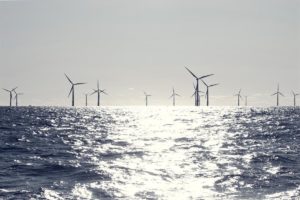
The Imperial College London conducted a study where it shows that the UK offshore wind generation costs have significantly declined in the last few years, bringing in the plausibility of the sector soon being subsidy negative as per their contract for difference (CfD). GlobalData anticipates that the declining costs not only make offshore wind cost-effective in diminishing the country’s carbon footprint but also drive the government to increase installations in an attempt to achieve its 2030 target.
Somik Das, senior power analyst at GlobalData, comments: “With negative subsidy being a conceivable scenario, the share and the target of offshore wind capacity would likely be further elevated by the UK Government, which will be more interested in the segment than ever before. Elevating the target of 40GW of overall offshore capacity by 2030 would mean that more than 20% of the overall installed capacity would be shaped by the offshore segment, making it a more recognisable energy source on which the nation can rely for its electricity needs.”
Offshore wind CfD prices are expected to decline and become cheaper than gas, where the price is expected to surpass £55/MWh by 2023-24. Major projects such as Doggerbank A and Doggerbank B are in the permitting phase and anticipated to come online by this time. These are key projects that saw success in the third round of CfD, held in 2019. With the next round planned to be held next year, projects coming up in the future stand a strong chance of experiencing negative subsidies.
Das concluded: “Over the next few years, the offshore segment is expected to boom. More than 19GW of offshore wind projects are in the pipeline, either in the nascent or advanced stages of development. Players such as SSE Renewables, Scottish Power Renewables, Orsted, Engie and many more have flocked this space, trying to grab a piece of the pie. Many would be constructed as deep sea projects at more than 40km from the shore, at depths ranging from 20-70m – making the most of favorable wind speeds of 7-10m/s. Some of them are expected to have turbine capacities of more than 10MW, and rotor diameters ranging from a mere 113m to over 200m.




Ambitious but welcome news. How much deep sea is likely to be semi-submersible wind farms which allow installation at greater depths and avoid buffetting by waves? The 40 GW target is 350 TWh a year, a big contribution towards the 2050 zero carbon challenge. As Somik Das says, this would be 20% of UK installed capacity, presumably of all renewables, so 100% is 1,760 TWh towards the UK’s total energy demand of 2,226 TWh in 2018 and rising. Will the rest come from nuclear? in particular SMRs to retrofit our gas fired power stations? Or perhaps we will import hydrogen from the Middel East instead of oil?